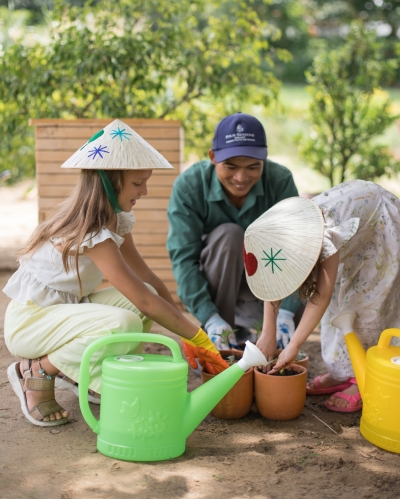The Art of Architecture: The Nam Hai Central Axis
The Vietnamese consider architecture to be their greatest artistic accomplishment. This might surprise many considering what the rest of the world has to offer, but there is so much more to these seemingly simple designs. Vietnamese architecture unites structure, landscape, and Phong Thuy (literally translated as "wind water" and widely known as Feng Shui) to brilliant effect.
From binh phong doorway screens that distract malevolent sprits carried on the wind to hallmark extra-wide staircases, discover traditional Vietnamese design details re-invented at Four Seasons Resort The Nam Hai, Hoi An:
- Long suites of doors adorn the fronts of many Vietnamese buildings, from palaces to garden houses - and the Resort's Boutique and Boardroom. Traditionally hinged and hung in couplets, the villa doors are fixed: mirrors replace open spaces and louvers replace grills creating a visually artistic rhythm of repetition, both ordered and quiet.
- To protect again extreme heat, most traditional garden houses in Vietnam take on as many as five layers of roof tiles. These fall into two categories: interlocking s-shaped pantiles that reference the yin and the yang; and flat densely configured tiles that the Vietnamese liken to the scales of a fish.
- The history of rice is synonymous with eating in Vietnam; even the word for eating, an com, literally means "eat rice." Rice was traditionally stored in handle-less chum jars that had to be embraced to be carried, further symbolising the country's love affair with the crop. This motif is echoed at the Resort in the big-bellied jars around the upper pool.
- Lanterns and lights are synonymous with Hoi An, and parallel illuminating motifs abound at The Nam Hai, from the glass orbs and lanterns in the restaurants to the Resort's nightly candle-lighting ritual and the nightly floating candle ceremony at The Heart of The Earth Spa.
- Aesthetic and symbolic, the avenue of palms flanking the Resort's central hub echoes the belief that a tree trunk's straightness (planted adjacent to a residence) is symbolic of the occupant's integrity. Similarly, the poolside frangipanis are a fragrant nod to the favourites of the Nguyen emperors.
- Lifted from the ancestral altar and carried during festivities, the candle-holder is a unifying and ever-present decorative motif at the Resort, found everywhere from the Library Gallery to the villas.
"It's my belief that history and time are an especially fertile breeding ground for contemporary and future architecture. We never repeat, but we look, understand and interpret. We take our part in centuries of refining the art of shelter," according to Reda Amalou, AW2, Architects of Four Seasons Resort The Nam Hai.

Dien Ban Town,
Vietnam

Dien Ban Town,
Vietnam



 @FourSeasonsPR
@FourSeasonsPR